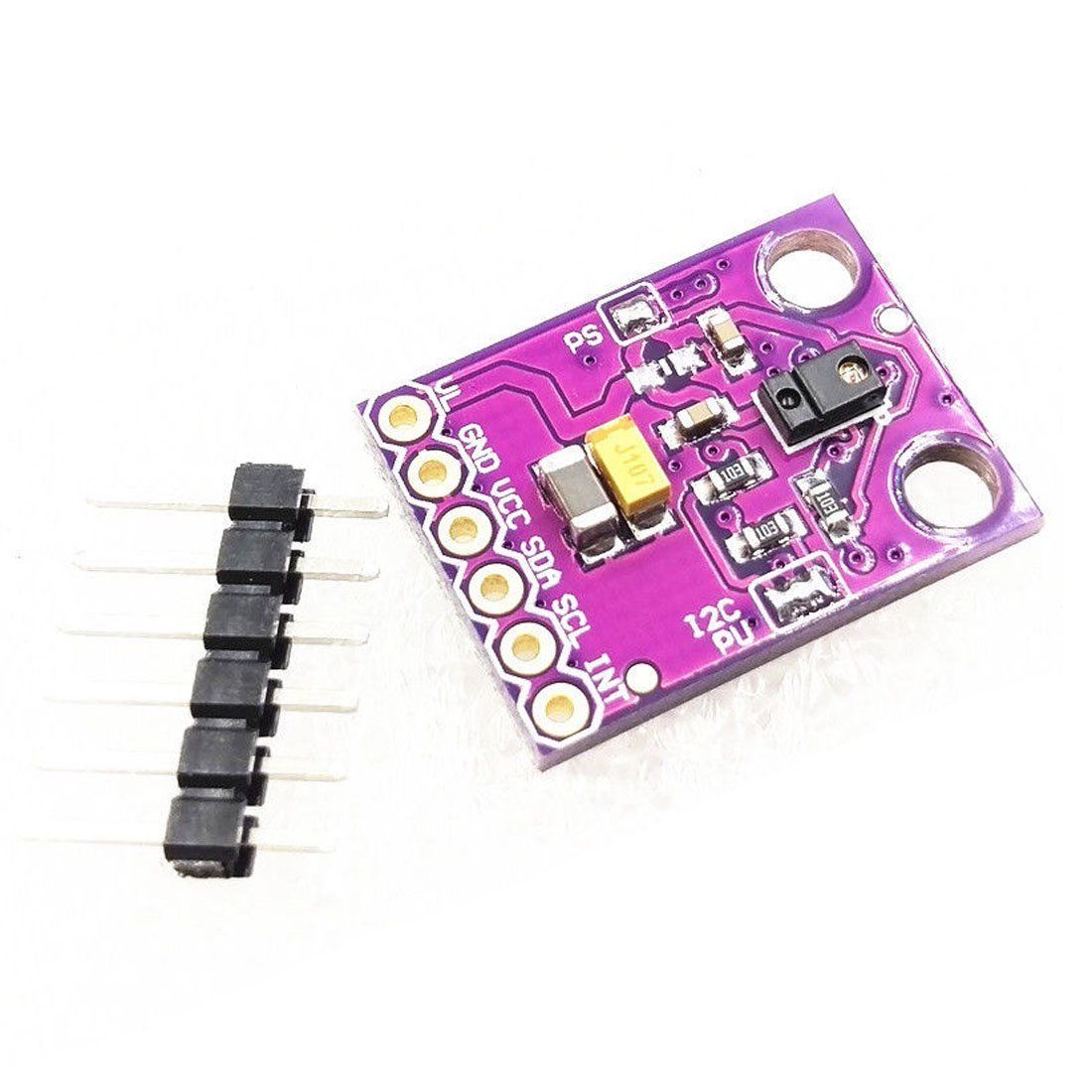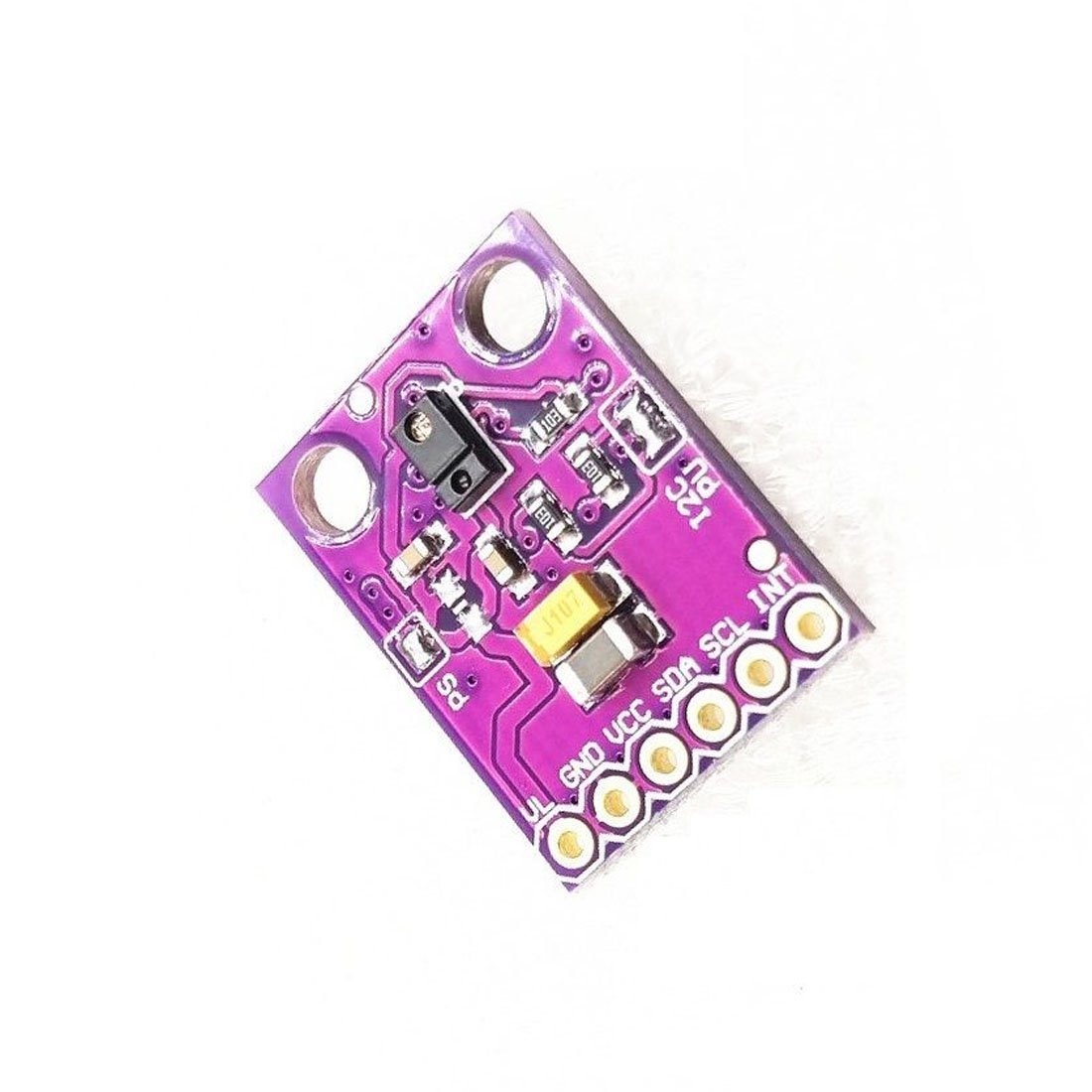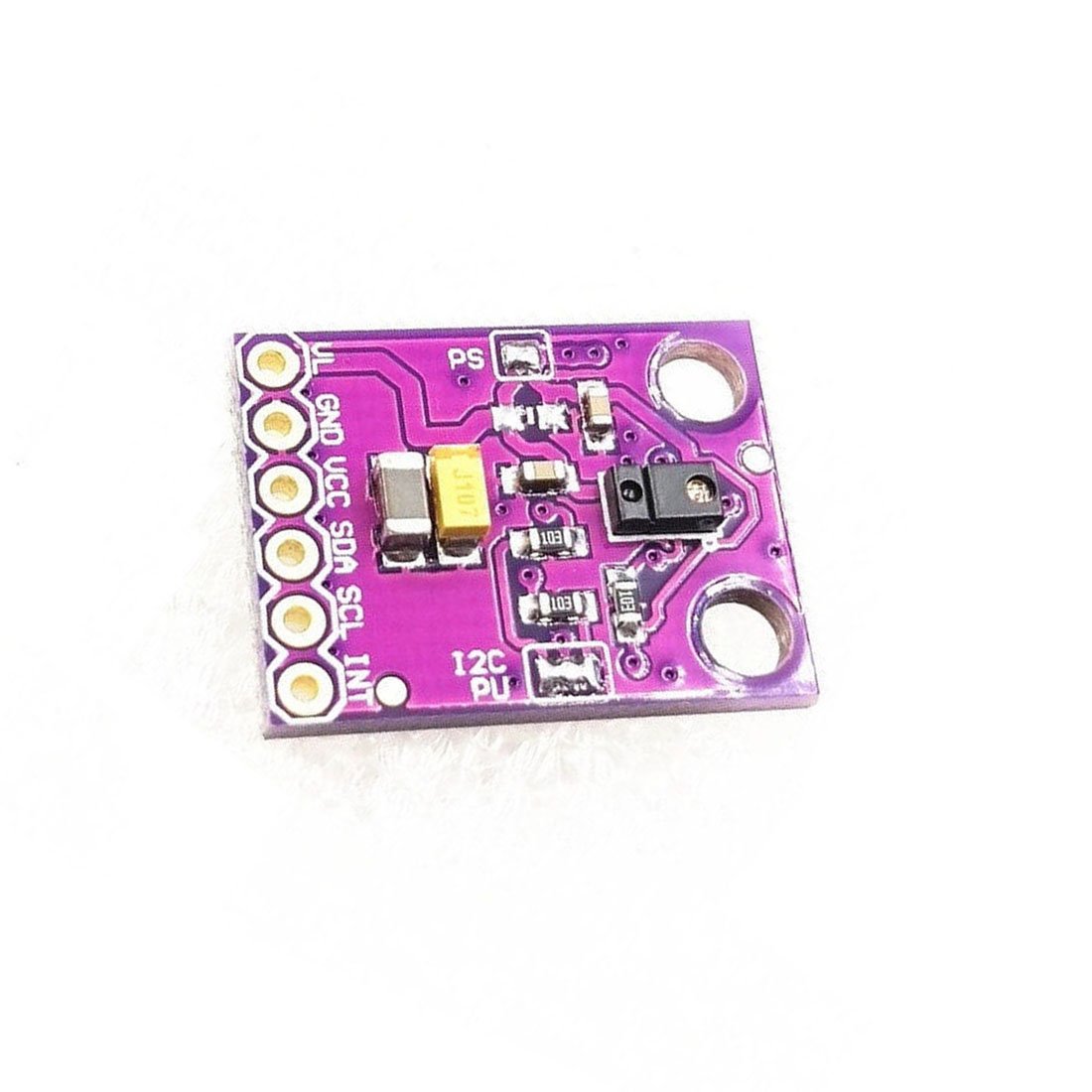


Description
It is a multifunction sensor which can detect gestures, ambient light, RGB Color & values in light.
This sensor consists of four photodiodes. These photodiodes detect the reflected IR energy which is transmitted by an on-board LED. So whenever any gesture is performed then this IR energy gets obstructed and reflects back to the sensor, now the sensor detects the velocity and direction information and converts it into digital information. APDS-9960 also has a detection range of 4 to 8 inches (10 to 20 cm).
Architecture
This sensor works on I2C communication protocol. It consumes 1µA current and powered by 3.3V so be careful and do not connect it with 5V pin. The INT pin here is interrupt pin, which is used to drive the I2C communication.
The architecture of the gesture engine features automatic activation (based on Proximity engine results), ambient light subtraction, cross-talk cancelation, dual 8-bit data converters, power-saving inter-conversion delay, 32-dataset FIFO, and interrupt-driven I2C communication. Power consumption and noise are minimized with adjustable IR LED timing.
Pinouts
The APDS9960 sensor has 6 pins. Following are the function of pins.
Interfacing APDS9960 Sensor with Arduino
We will be using the Arduino UNO Board for interfacing the APDS9960 Sensor. We must use 3.3V to power the sensor. If we try to use a 5V power supply we may risk damaging the APDS-9960.
Connect the SDA Pin to A4 of Arduino & SCL to A5. Connect its INT pin to D2. We are leaving VL on the breakout board unconnected.
Installing APDS9960 on Arduino IDE
The Arduino library for APDS9960 is created by Sparkfun. The library makes the APDS-9960 easy to use.
To install the library, go to the Library Manager in Arduino IDE & install the following Sparkfun library as shown in the image below.
Code
#include <Wire.h>
#include <SparkFun_APDS9960.h>
#define APDS9960_INT 2 // Needs to be an interrupt pin
// Global Variables
SparkFun_APDS9960 apds = SparkFun_APDS9960();
int isr_flag = 0;
void setup() {
// Initialize Serial port
Serial.begin(9600);
Serial.println();
Serial.println(F("--------------------------------"));
Serial.println(F("APDS-9960 - GestureTest"));
Serial.println(F("--------------------------------"));
// Initialize interrupt service routine
attachInterrupt(0, interruptRoutine, FALLING);
// Initialize APDS-9960 (configure I2C and initial values)
if ( apds.init() ) {
Serial.println(F("APDS-9960 initialization complete"));
} else {
Serial.println(F("Something went wrong during APDS-9960 init!"));
}
// Start running the APDS-9960 gesture sensor engine
if ( apds.enableGestureSensor(true) ) {
Serial.println(F("Gesture sensor is now running"));
} else {
Serial.println(F("Something went wrong during gesture sensor init!"));
}
}
void loop() {
if( isr_flag == 1 ) {
detachInterrupt(0);
handleGesture();
isr_flag = 0;
attachInterrupt(0, interruptRoutine, FALLING);
}
}
void interruptRoutine() {
isr_flag = 1;
}
void handleGesture() {
if ( apds.isGestureAvailable() ) {
switch ( apds.readGesture() ) {
case DIR_UP:
Serial.println("UP");
break;
case DIR_DOWN:
Serial.println("DOWN");
break;
case DIR_LEFT:
Serial.println("LEFT");
break;
case DIR_RIGHT:
Serial.println("RIGHT");
break;
case DIR_NEAR:
Serial.println("NEAR");
break;
case DIR_FAR:
Serial.println("FAR");
break;
default:
Serial.println("NONE");
}
}
}
After uploading the code swipe your hand to left, right, forward, backward, near, far. The Serial Monitor will display the Gesture data whenever an interrupt is detected.









